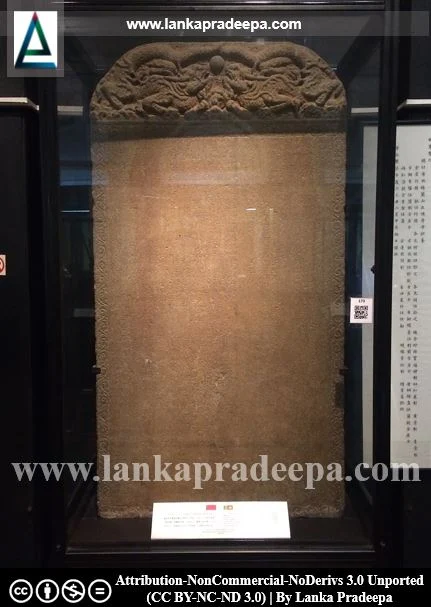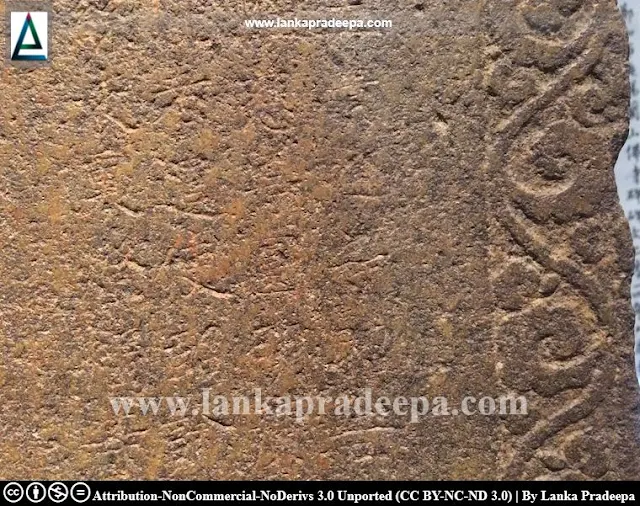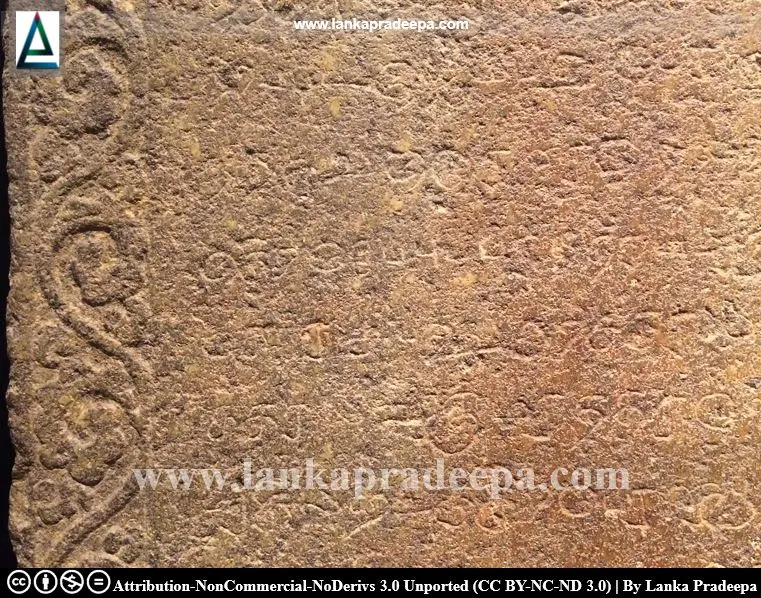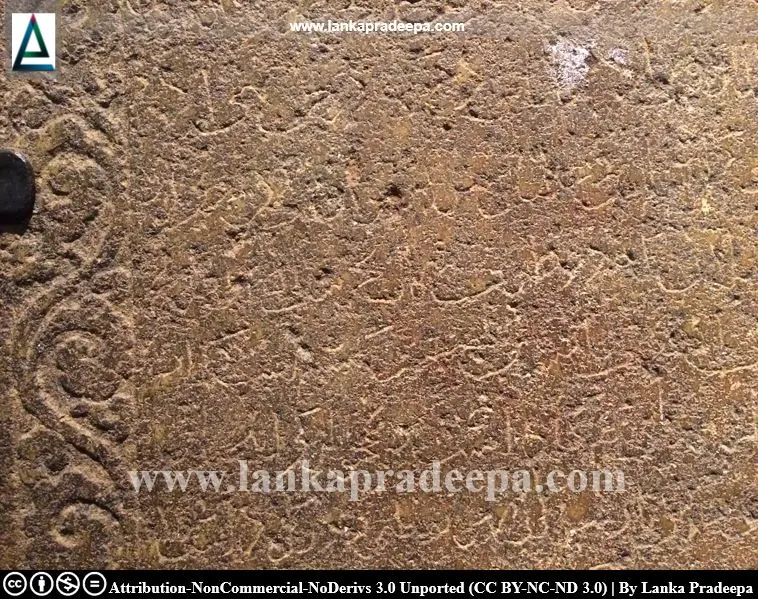
The Galle Trilingual Slab Inscription (Sinhala: ගාල්ල ත්රයිභාෂා පුවරු ලිපිය; Tamil: காலி மும்மொழிக் கல்வெட்டு) is a stone slab containing inscriptions engraved in three languages; Chinese, Persian and Tamil. It is presently exhibited in the Transitional Period Gallery of the National Museum of Colombo, Sri Lanka. This artefact is considered an important cultural relic of the ancient Silk Route of the sea.
Discovery
The slab was discovered in 1911 by H. F. Tomalin (the then Provincial Engineer at Galle of Southern Province) at a culvert near the turn of Cripps Road within the Galle municipal area (Pathmanathan, 2005; Perera, 1913). When it was discovered, the stone is said to be used as a cover stone for the culvert with the engraved side downward (Perera, 1913). The stone was later moved to Colombo National Museum (Pathmanathan, 2005).
History
The inscription bears the date 15 February 1409, indicating its inscribed date in China. It was carved in Nanjing, the then capital city of China in the seventh reigning year of the Yongle Empire [(or Yung Lo (1402-1424 A.D.)] of the Ming Dynasty. It was brought to Sri Lanka by the great navigator Zheng He [also known as Cheng Ho (1371-1433 A.D.)] during his third voyage [1409-1411 (it was the second voyage under his leadership)] to countries (Dewaraja, 2006). After landing followed by a trade fair at the Galle harbour he installed the inscription as a commemorative tablet in order to highlight the majesty and benevolence of the Ming empire (Dewaraja, 2006).
Inscriptions

The three inscriptions that have been engraved on one side of the slab are bordered by a floral chain. The top part of the inscription is round in shape and adorned with a carving of two dragons facing each other. The slab is about 4 ft. 9 inches in length, 2 ft. 6 inches in breadth and 5 inches in thickness (Paranavitana, 1933). The right portion of the slab is occupied by the Chinese inscription while the left upper part is by the Tamil inscription and the rest is by the Persian inscription.
The Chinese record which is the best-preserved inscription was deciphered and translated by E. Blackhouse (Pathmanathan, 2005). It contains the blessings to the Lord Buddha and a list of offering alms bestowed by Cheng Ho, Wang Chin Lien and others at the shrine of the Buddhist temple in the Mountain of Sri Lanka [(most probably Sri Pada Mountain) Paranavitana, 1958]. The Tamil inscription of which language contains linguistic difficulties evokes the Hindu divinities and mentions the ritual items sent to Sri Lanka for the worship of Tenavarai Nayanar (Paranavitana, 1933). The name Tenavarai, according to Senarth Paranavitana, is the Tamil form of the Sinhalese Devinuwara [the City of God (modern Devundara)] and Nayanar is the Tamil word used to denote the God/lord (Paranavitana, 1933). In the chronicle Mahawamsa, Devinuwara is mentioned as the centre of the cult of the deity Uppalavanna who is currently identified with God Vishnu. The Persian inscription is largely defaced and readable parts contain blessings of the light of Islam and a number of offerings might have been made to Allah, Prophet or some Muslim priest. The clear translation of the Chinese inscription has helped in deciphering the other two inscriptions, Tamil (which contains linguistic difficulties) and Persian [(which is badly worn out) Dewaraja, 2006].
The inscription contains no Sinhalese part, the majority language of Sri Lanka. This is because, the records were intended by the admirals and other sailors (Chinese Buddhists, Tamil speaking Indian Hindus and Muslim sailors) who came in ships from outside to express thanksgiving to the masters of their respective religions (Dewaraja, 2006).


.
References
1) Dewaraja, L., 2006. Cheng Ho's Visits to Sri Lanka and the Galle Trilingual Inscription in the National Museum in Colombo. Journal of the Royal Asiatic Society of Sri Lanka, 52, pp.59-74.
2) Pathmanathan, S., 2005. Tamil inscriptions in the Colombo National
Museum: Spolia Zeylanica. Vol 47. (2010). Department of National
Museums, Sri Lanka, pp.53-67.
3) Paranavitana, S., 1933. The Tamil inscription on the Galle Trilingual Slab. Epigraphia Zeylanica (Vol. III). pp.331-341.
4) Paranavitana, S., 1958. The god of Adam's Peak. Artibus Asiae. Supplementum, 18, p.17. 3) Paranavitana, S., 1933. The Tamil inscription on the Galle Trilingual Slab. Epigraphia Zeylanica (Vol. III). pp.331-341.
5) Perera, E. W., 1913. The Galle Trilingual Slab. Spolia Zeylanica (Vol. VIII). pp.122-131.
Location Map
This page was last updated on 7 November 2022

